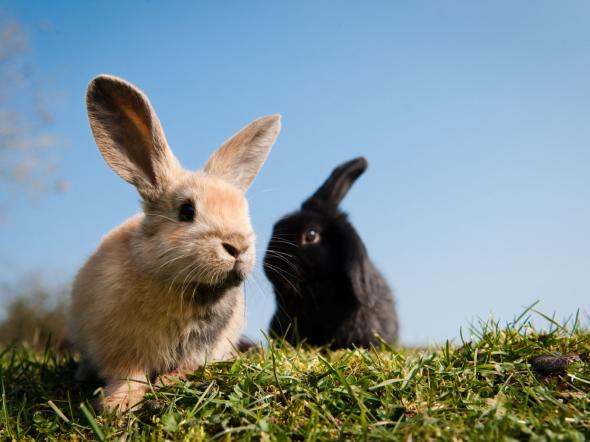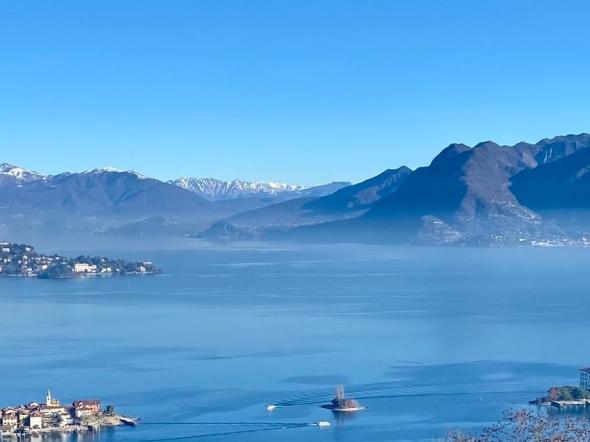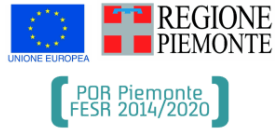Setting off on foot from Fondotoce, you can reach Intra by skirting the lake shores, admiring truly spectacular views along the way. On this pleasant 2-hour stroll, you can cross gardens and parks, and marvel at monuments and historic buildings that are unique of their kind.
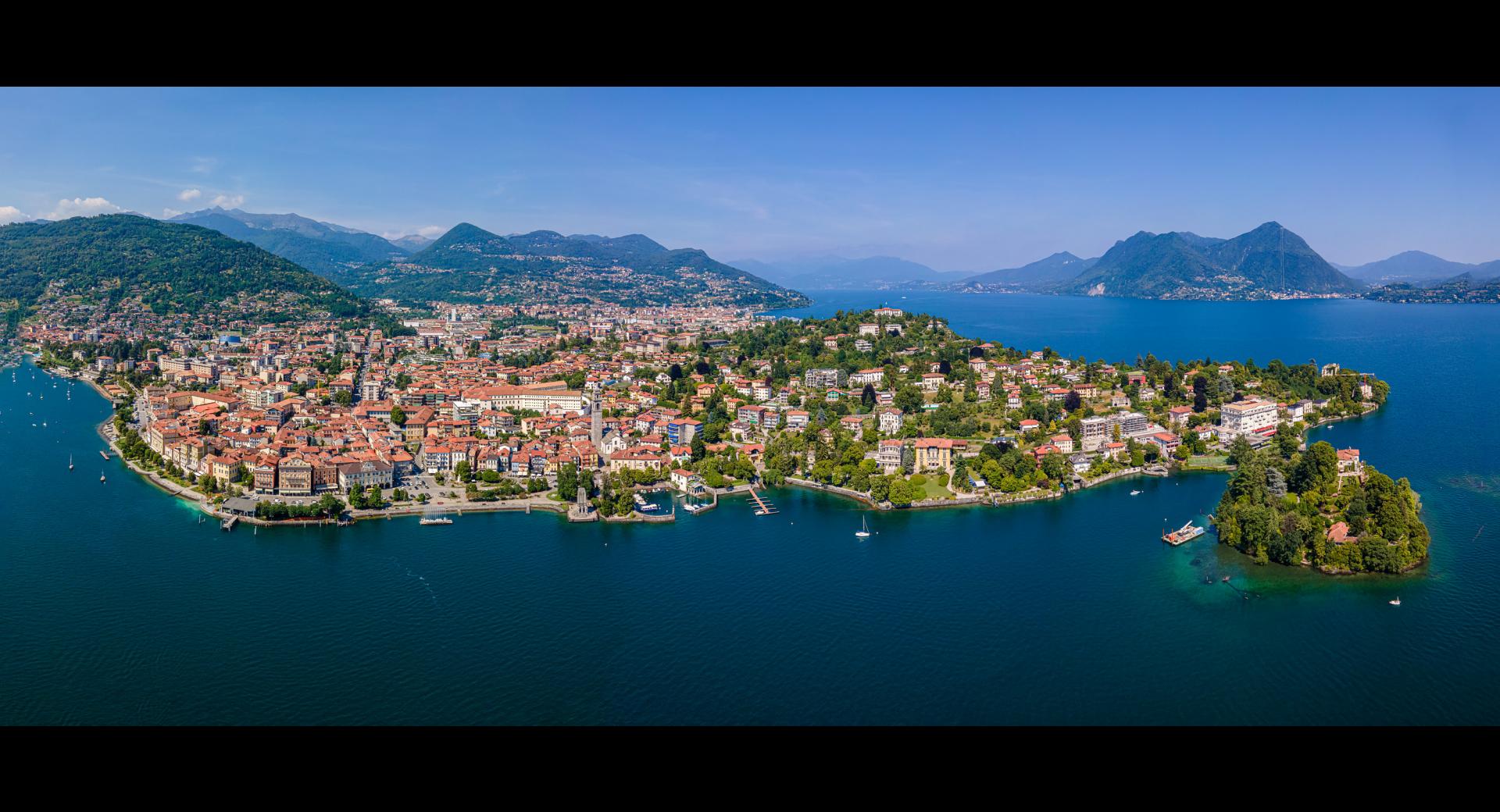
THE LAKEFRONT
THE LAKESIDE HAMLETS: FONDOTOCE, SUNA, PALLANZA AND INTRA
Fondotoce
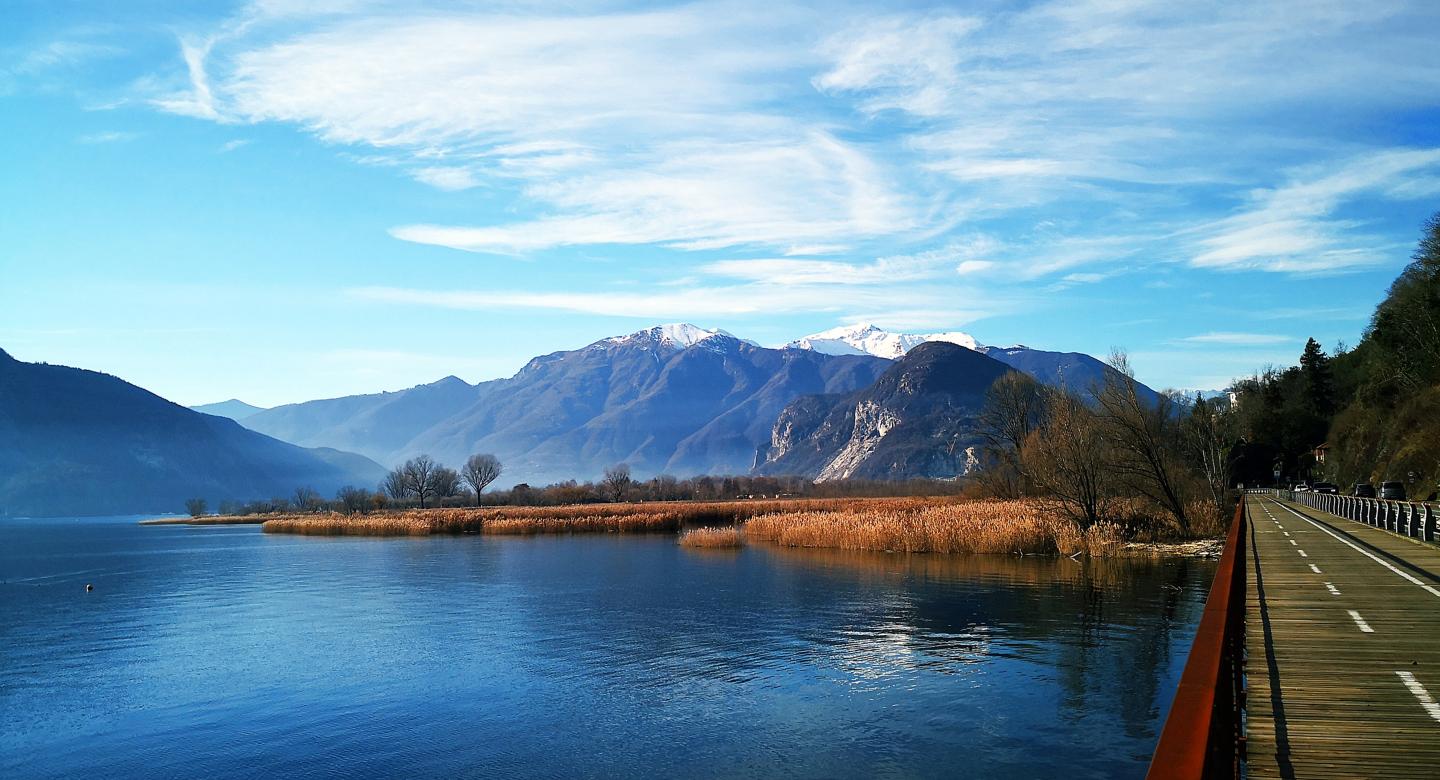
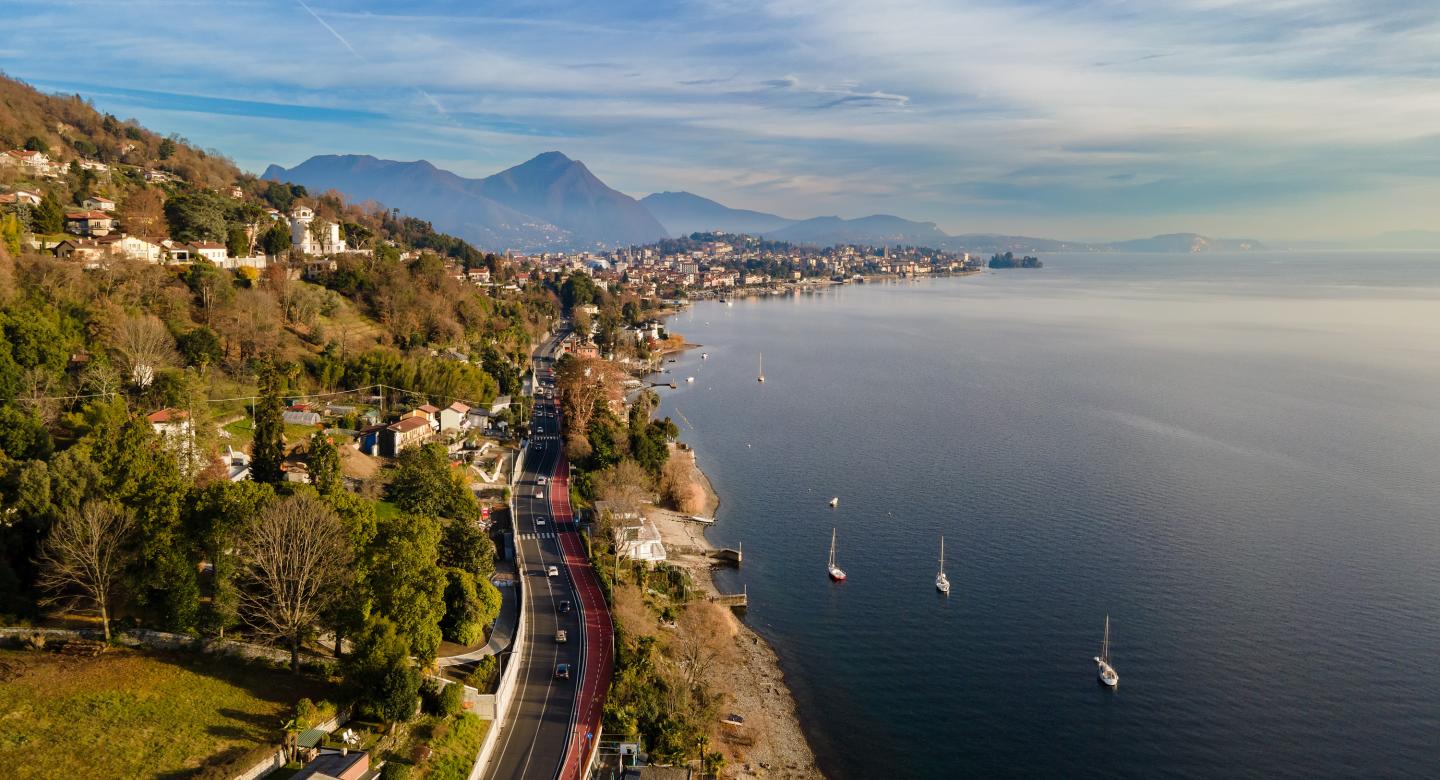
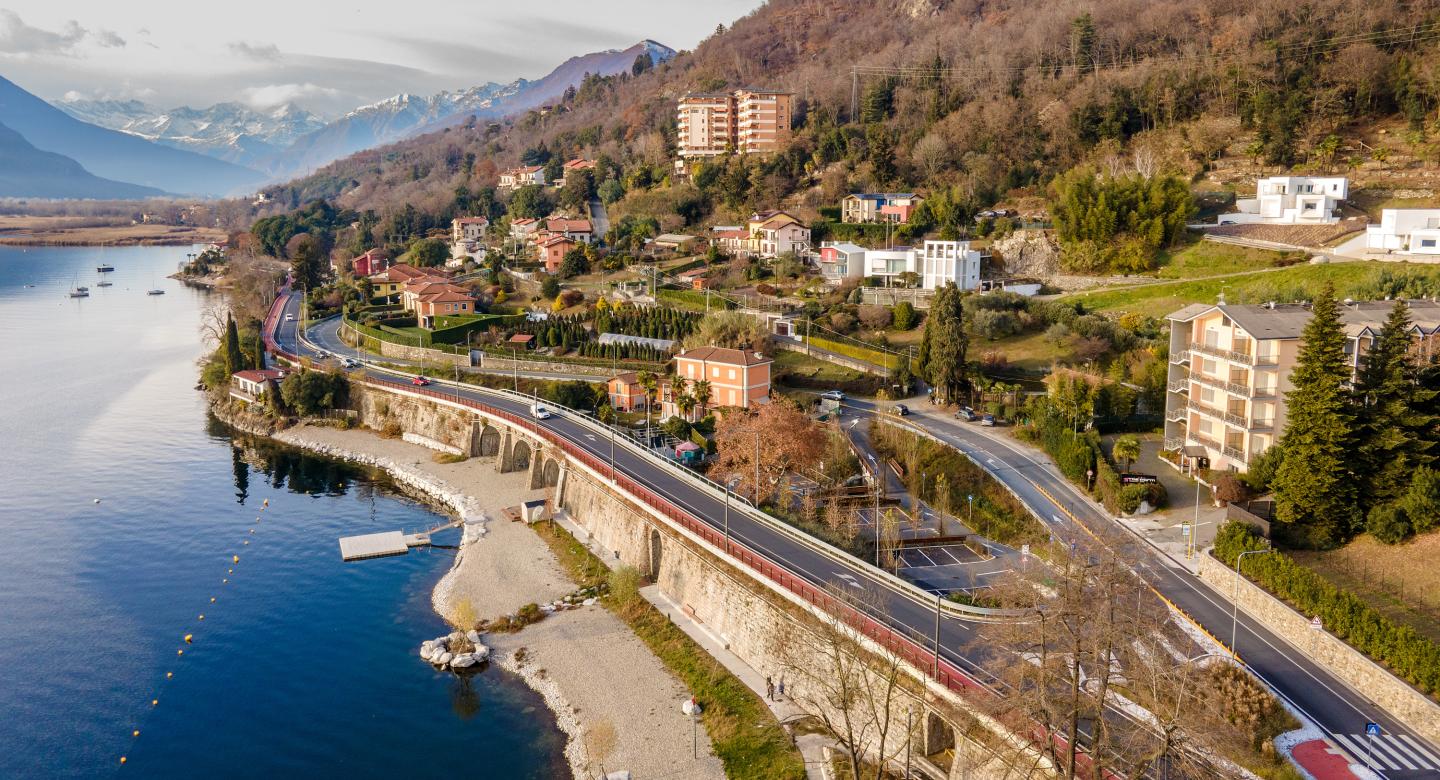
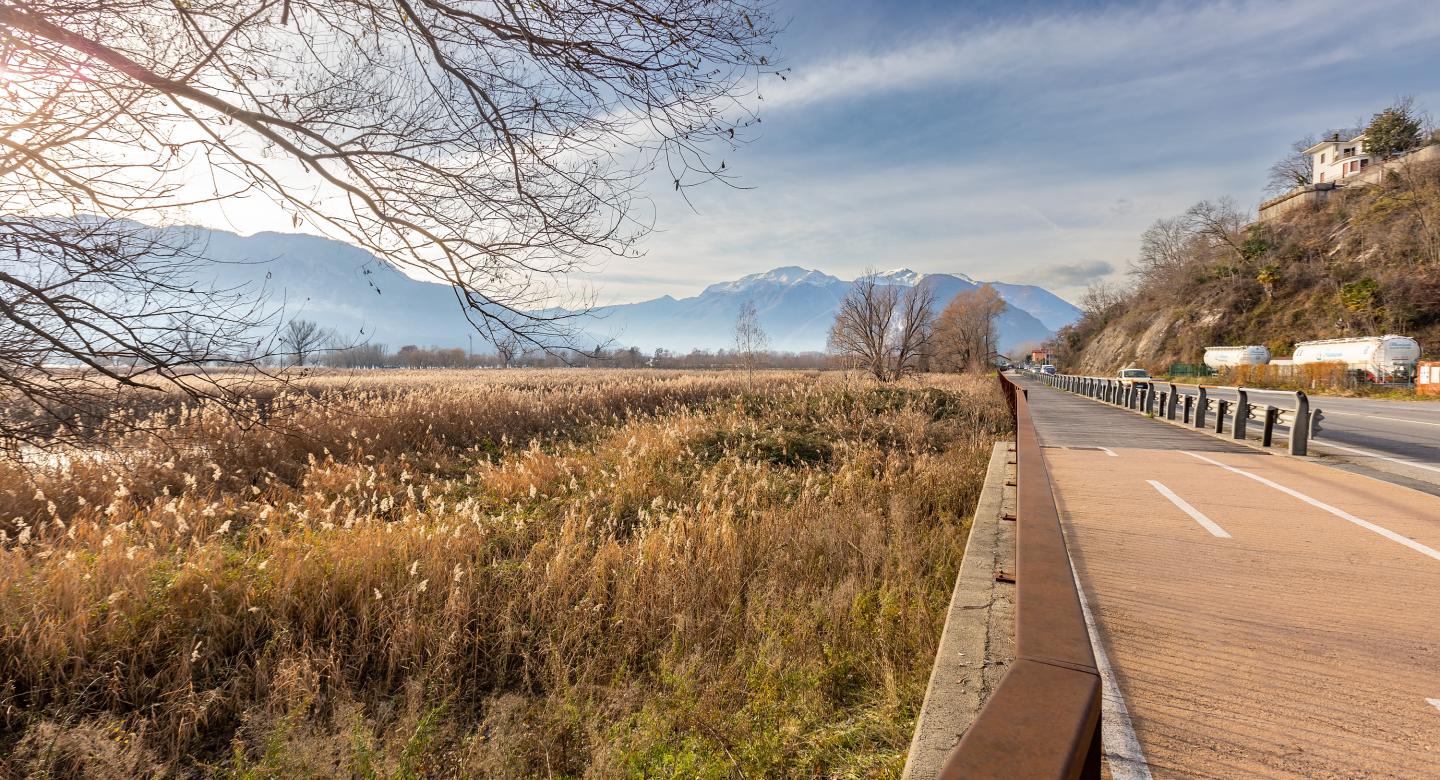
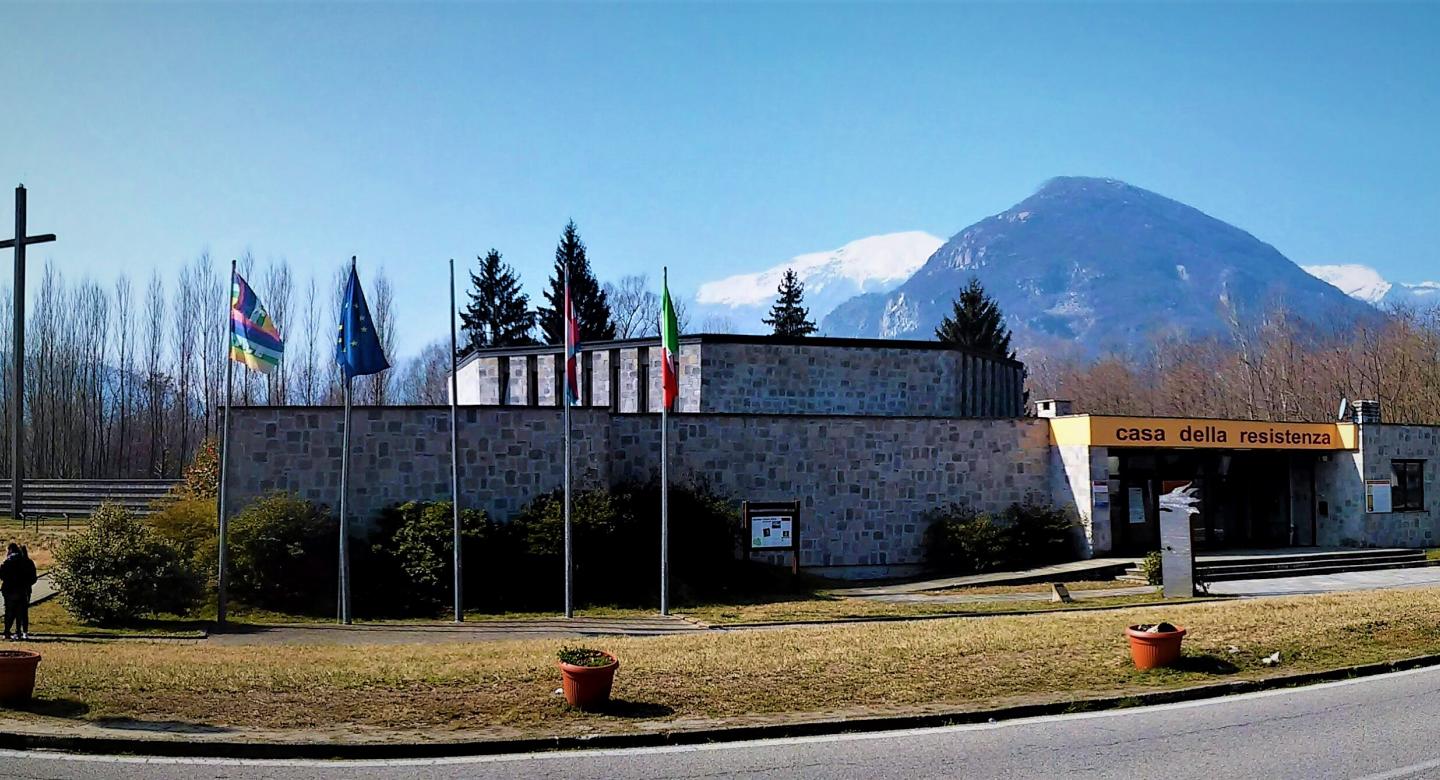
This small hamlet takes its name from its unique position al fondo (at the bottom) of the mouth of the Toce river, one of Lake Maggiore’s major emissaries that crosses the Formazza valley and the Ossola plain to create the Borromean Gulf, which most of the city of Verbania overlooks.
The new cycle/pedestrian road starts directly from the Fondo Toce Nature Reserve and follows the edge of lake, enabling walkers and cyclists to pass through all the villages in the municipality of Verbania located along its banks.
Fondotoce houses the Casa della Resistenza and the Parco della memoria e della Pace (Park of Memory and Peace), erected to commemorate the tragic Nazi-fascist roundups of June 1944, in Val Grande, together with the demise of approximately 1,300 partisans from the provinces of Novara and Verbano-Cusio-Ossola.
Leaving the lakefront for a few moments, you might like to ascend the ‘motta santa’, one of the oldest paths in the village, to reach the ancient Fondotoce cemetery, built in 1879 and still intact, even if it is no longer in use.
Suna
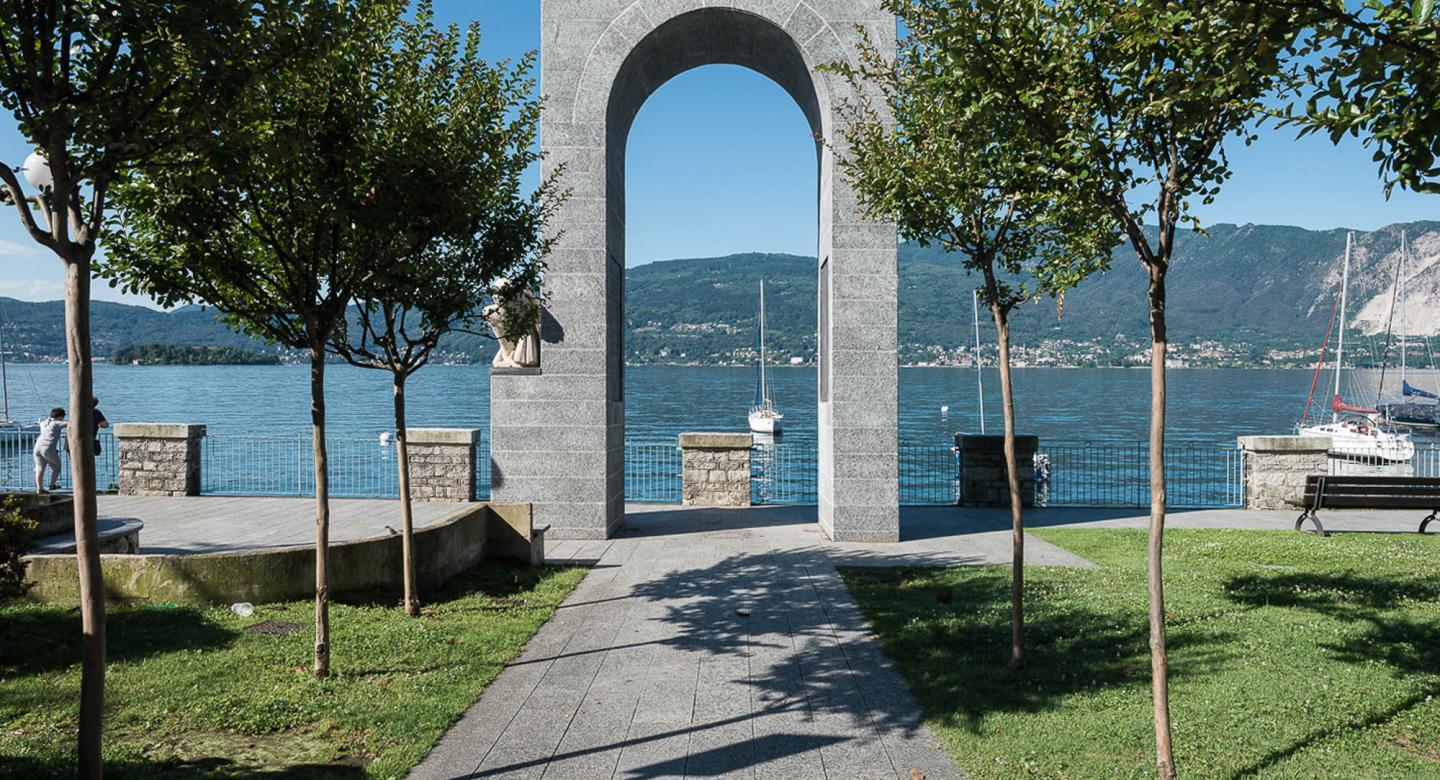
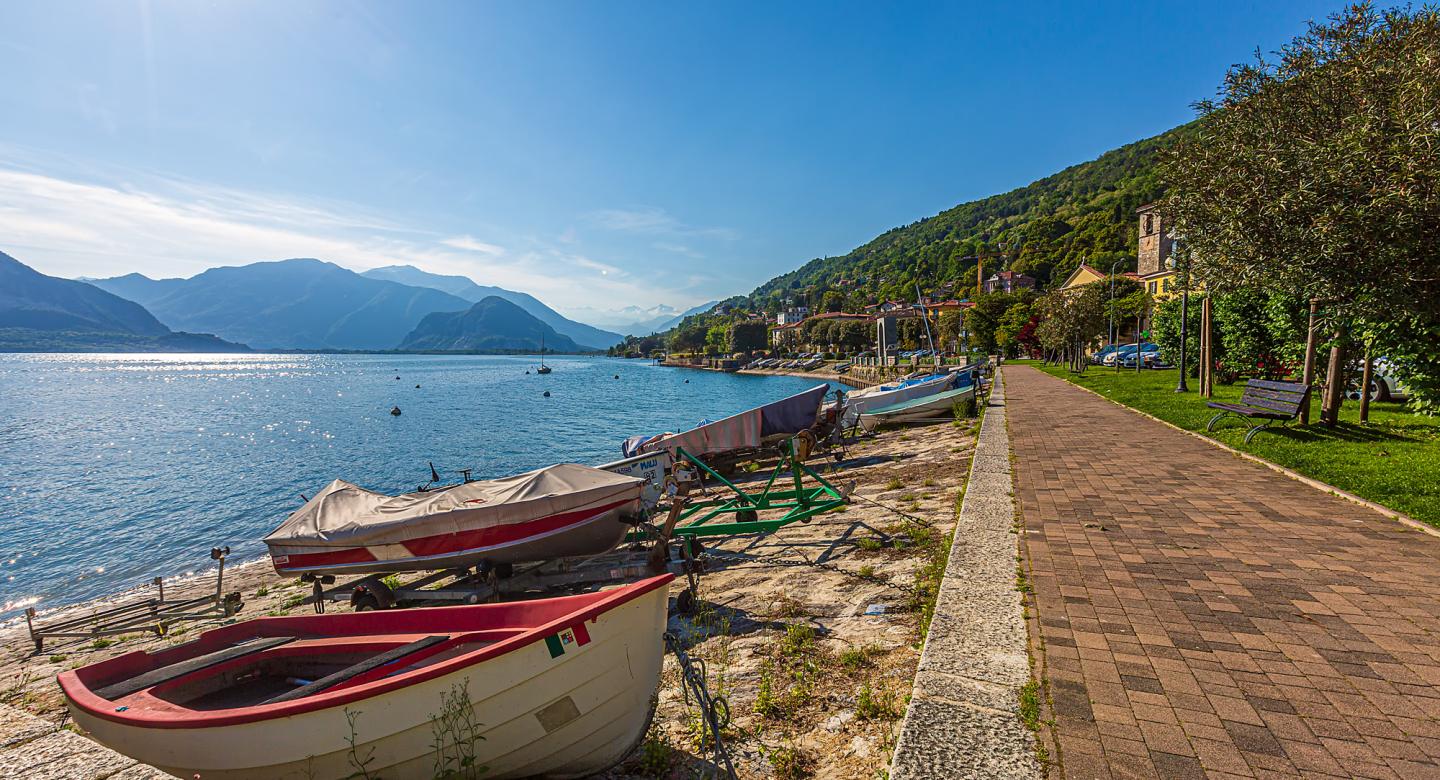
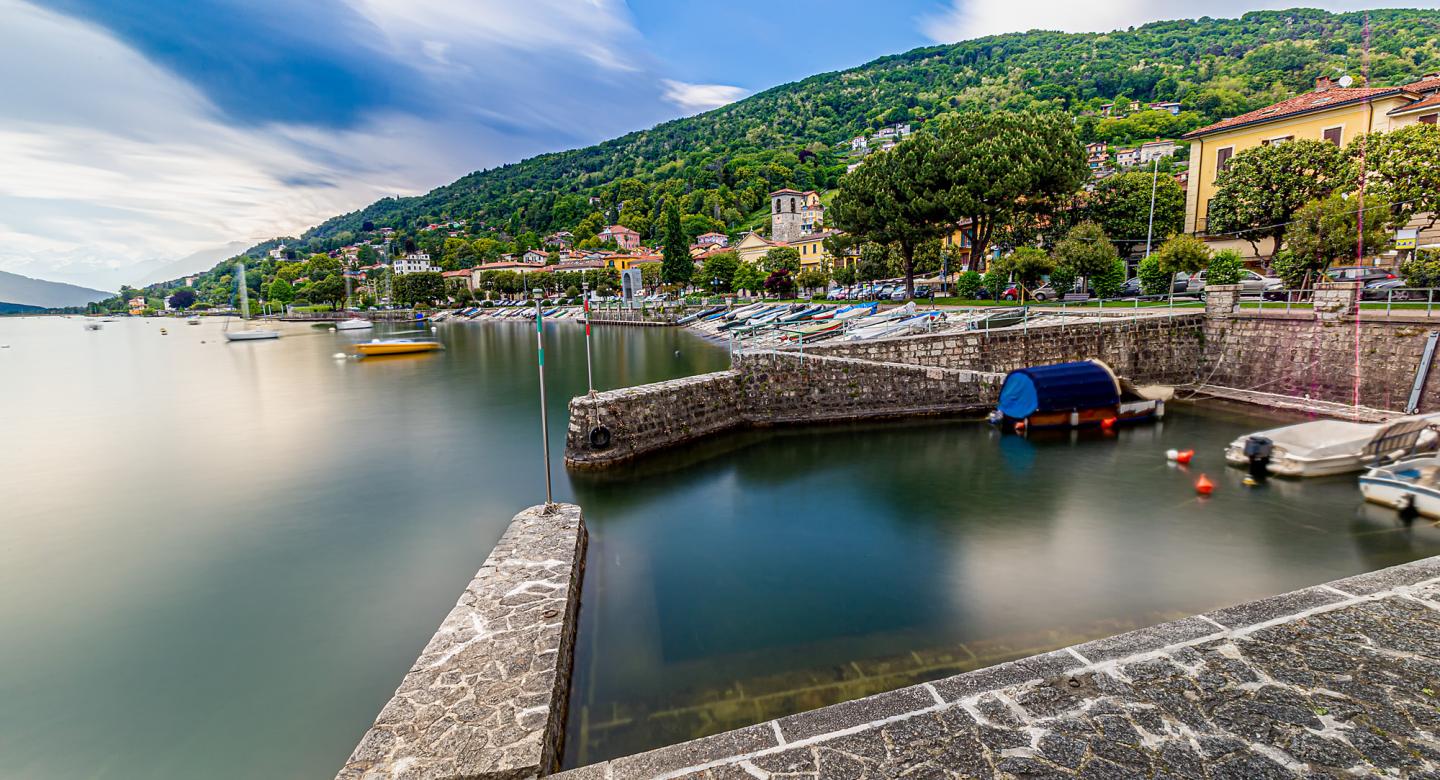
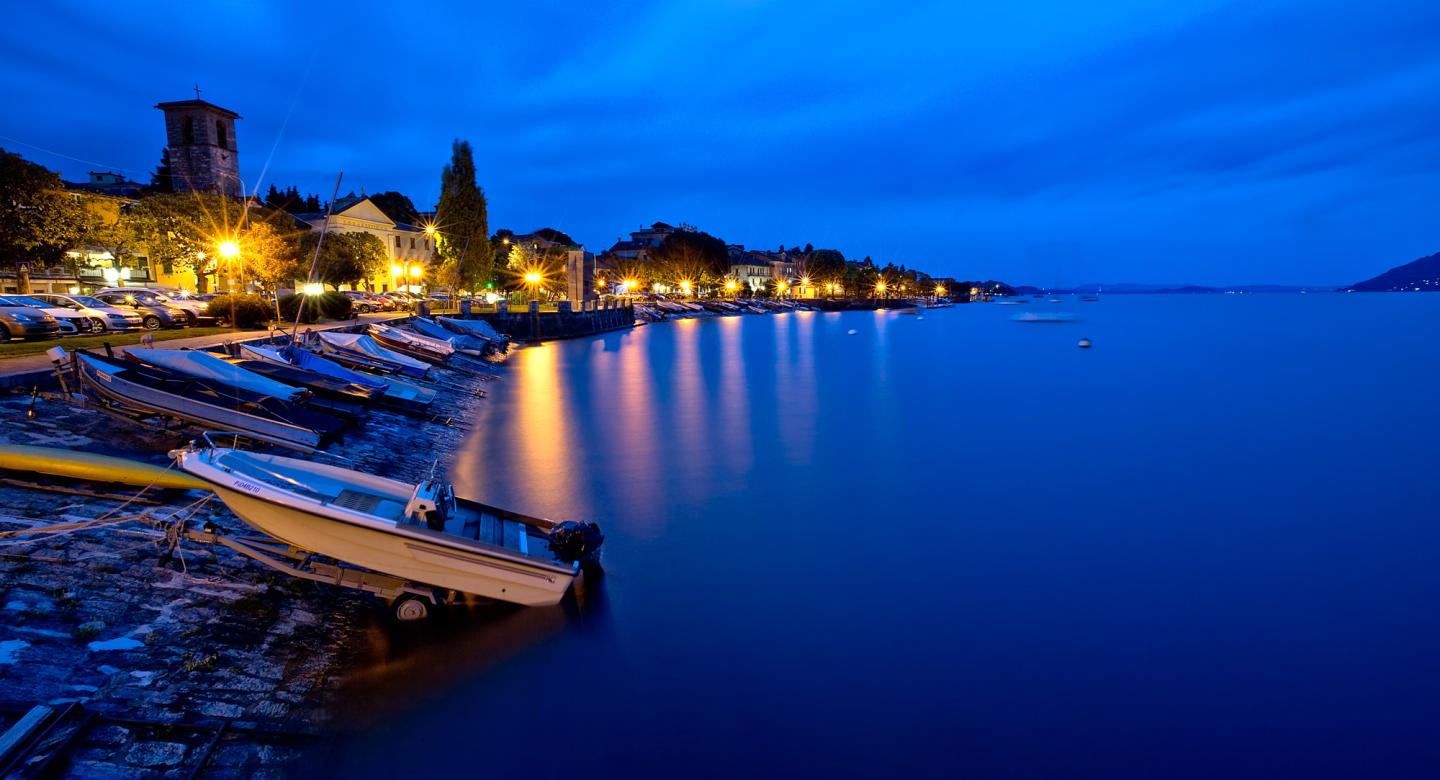
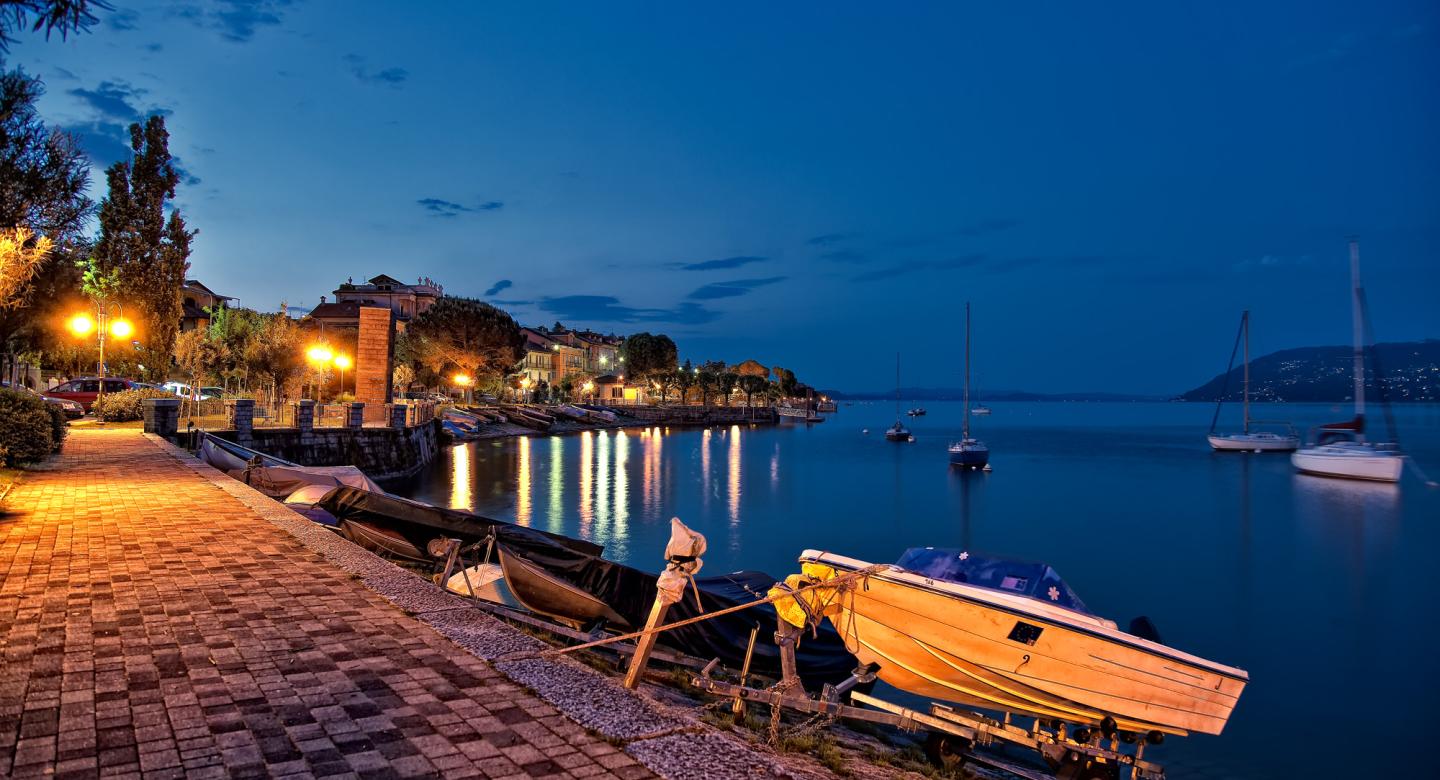
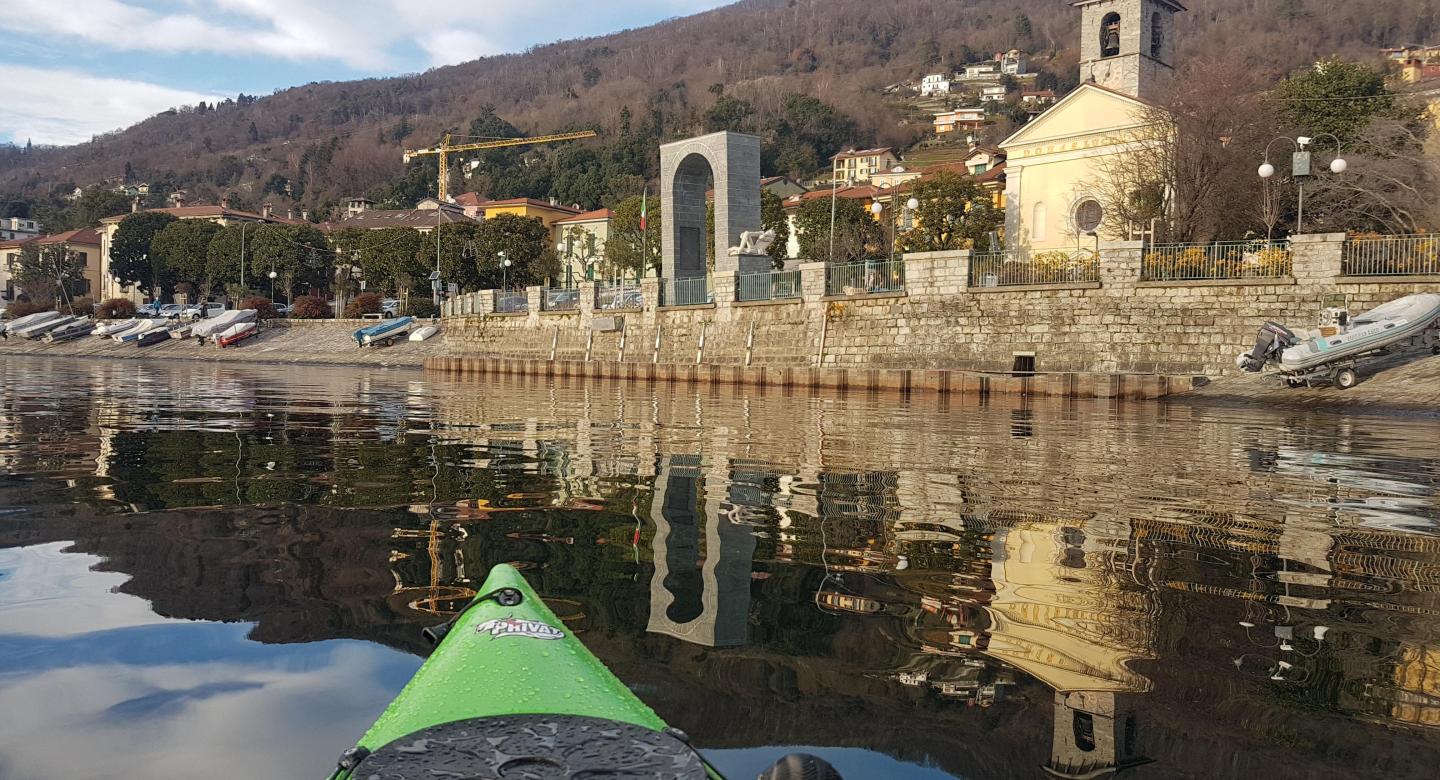
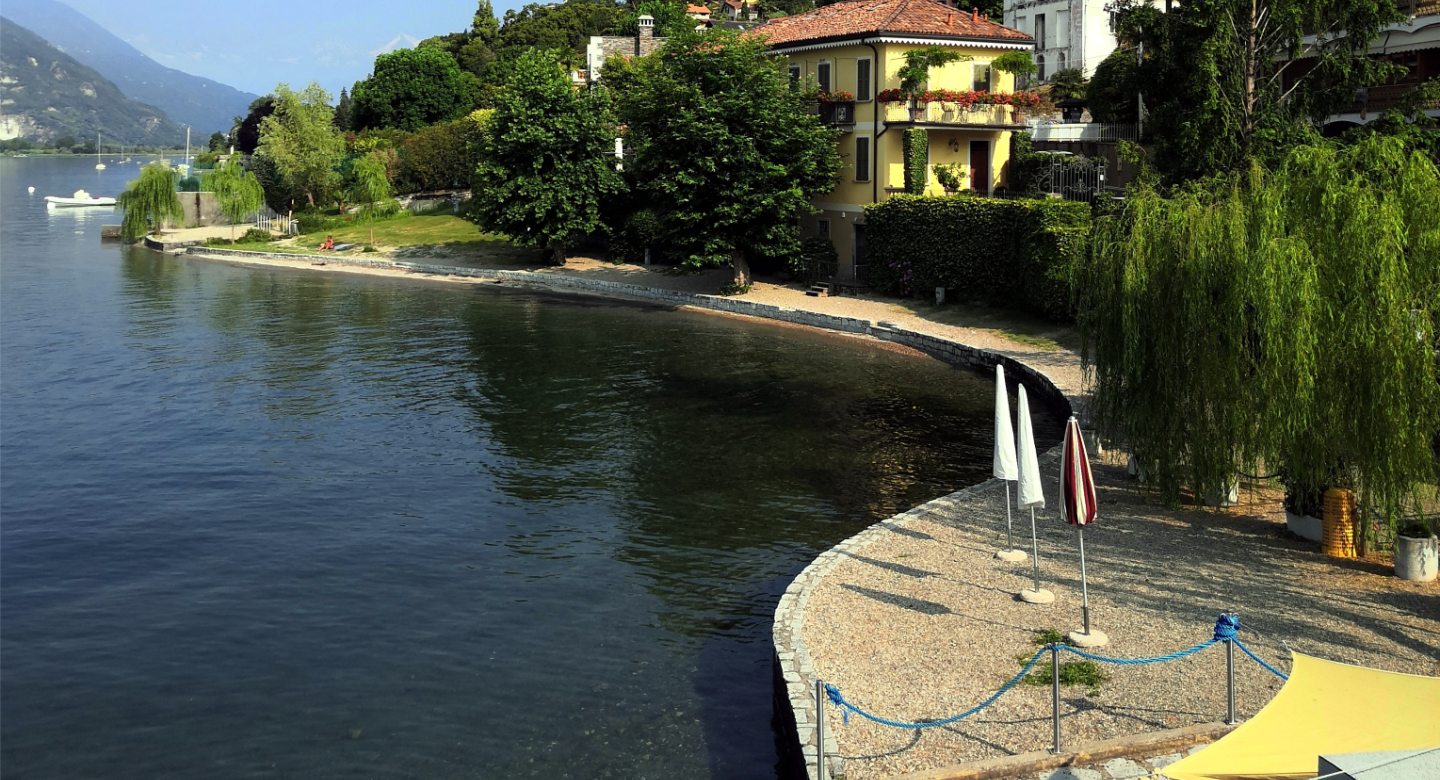
Continuing along the new cycle/pedestrian path that runs parallel to the main road, we reach Suna, an ancient village of stonemasons, horsemen and fishermen.
Walking along the lakefront, you reach an imposing arch in exposed stone blocks flanked by the statue of a mortally wounded soldier looking upwards for one last glimpse of the sky; this is the evocative Monumento ai Caduti (Monument to Fallen Soldiers), the work of the famous artist Mario Tozzi who had strong links with Suna. When commissioned to design a commemorative monument Tozzi decided to create an artwork that would enhance the surrounding panorama, rather than obstructing the view. Indeed, the arch frames the Borromean Gulf and the mountains which can be admired in all their splendour.
Facing this monument is the 16th century church of Santa Lucia, dedicated to the Syracusan martyr, protector of the blind and of all stonemasons, who often ran the risk of damaging their eyes in plying their arduous trade.
Furthermore, the parish church contains some artworks by Mario Tozzi. Particularly noteworthy are the frescoes, positioned on the ceiling near the entrance, depicting saints, including the patron Santa Lucia.
A little further on stands the Romanesque church of San Fabiano located in an elevated position which, over the centuries, assured its key role as a safer location during the lake floods.
The presence of enigmatic stone engravings along the access stairway, probably devotional signs or graffiti etchings, always arouse great interest. A few meters away, the Lido with its bathing area is very popular during the summer season both with residents and tourists.
Pallanza
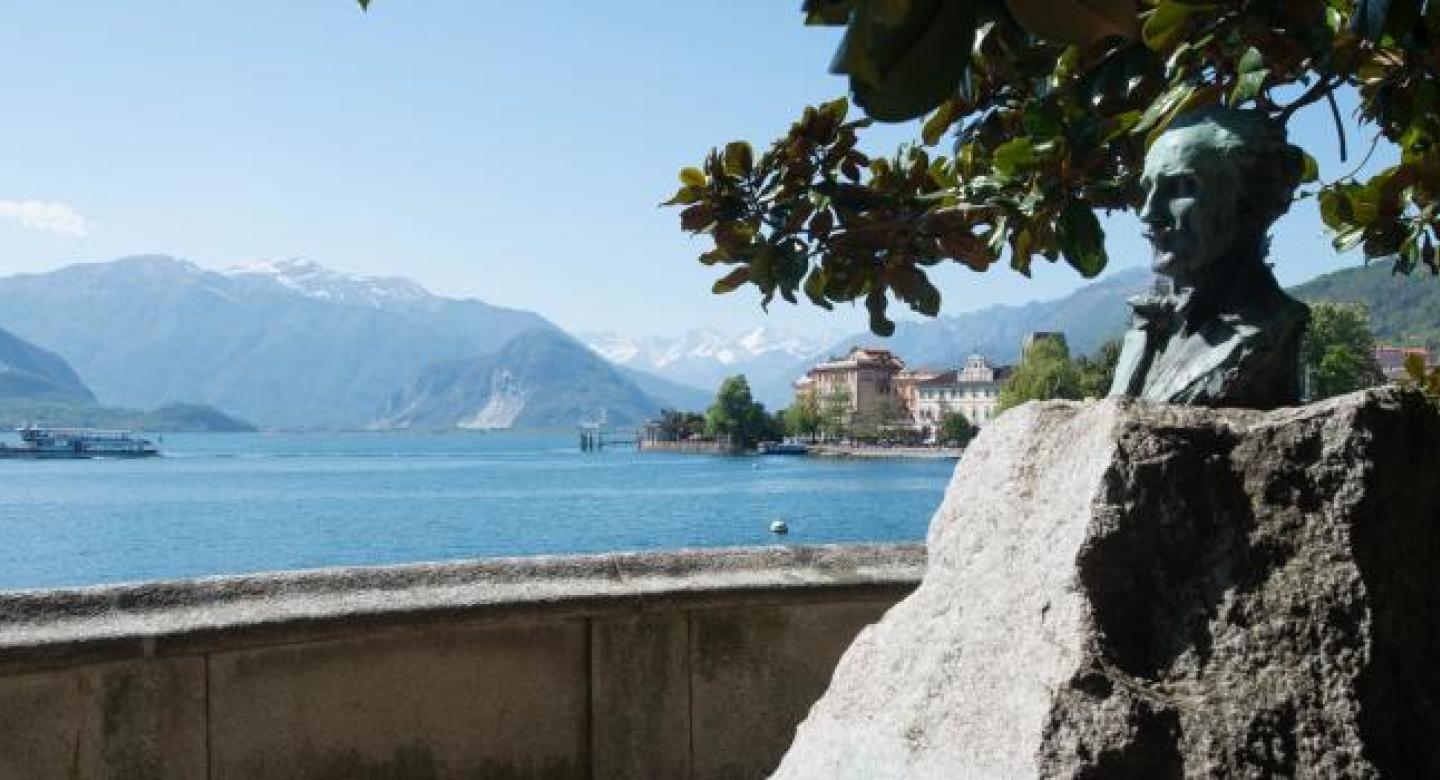
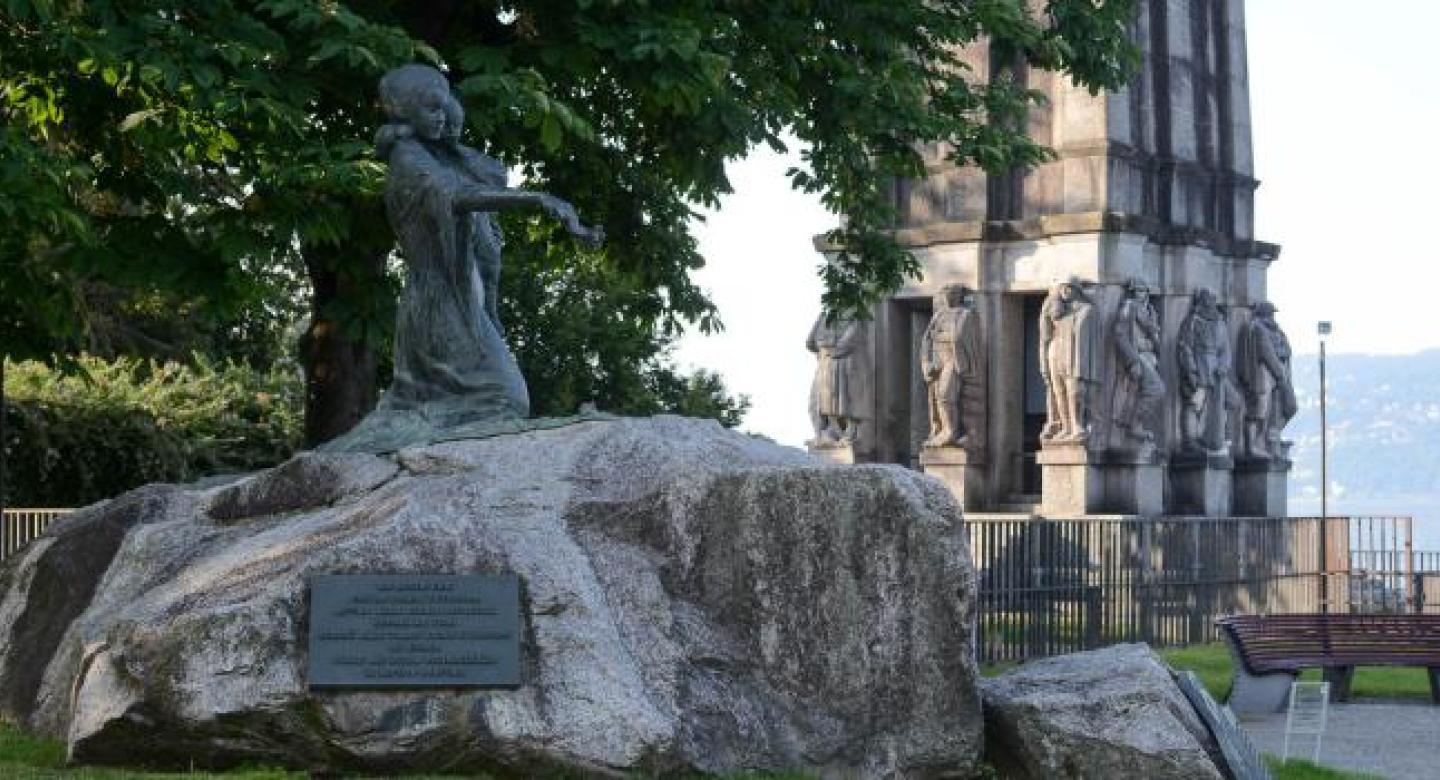
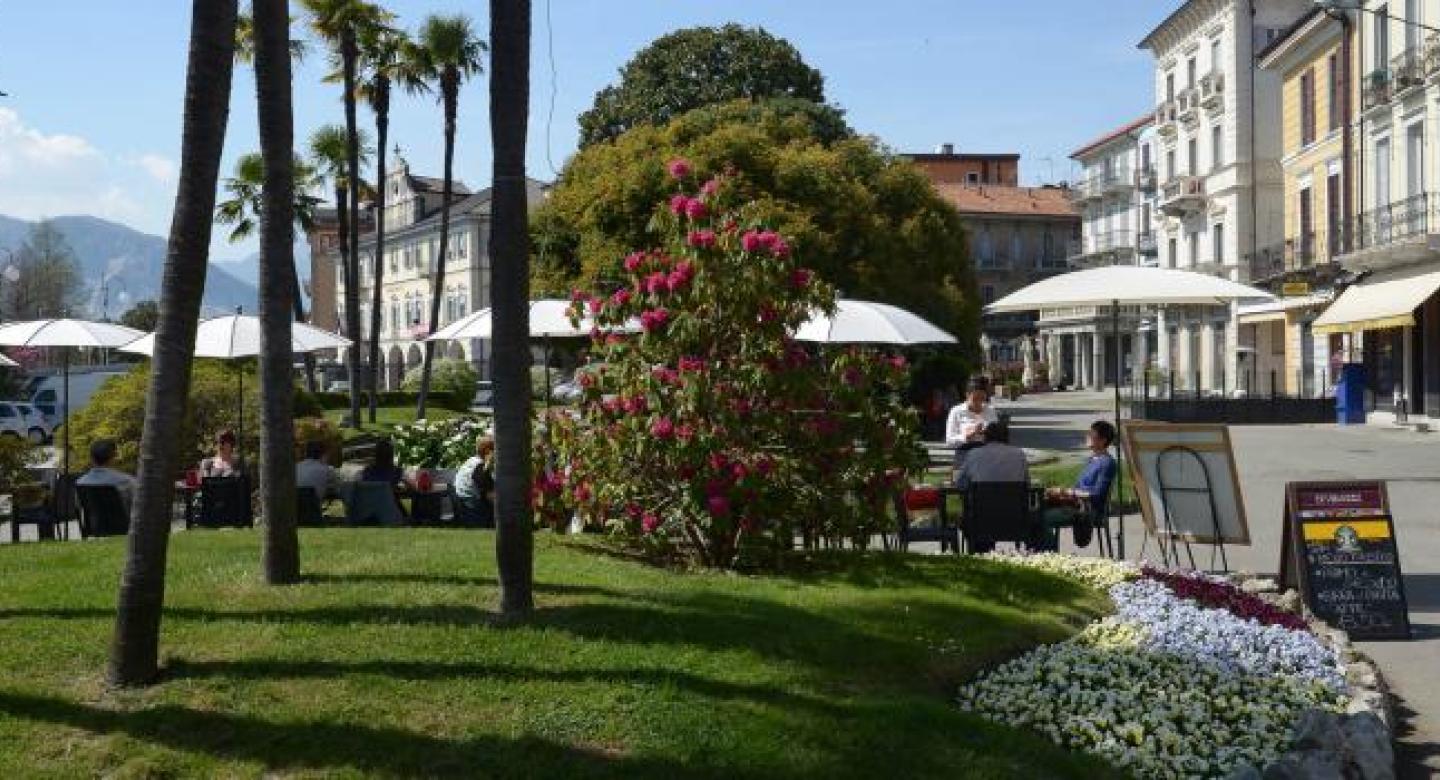
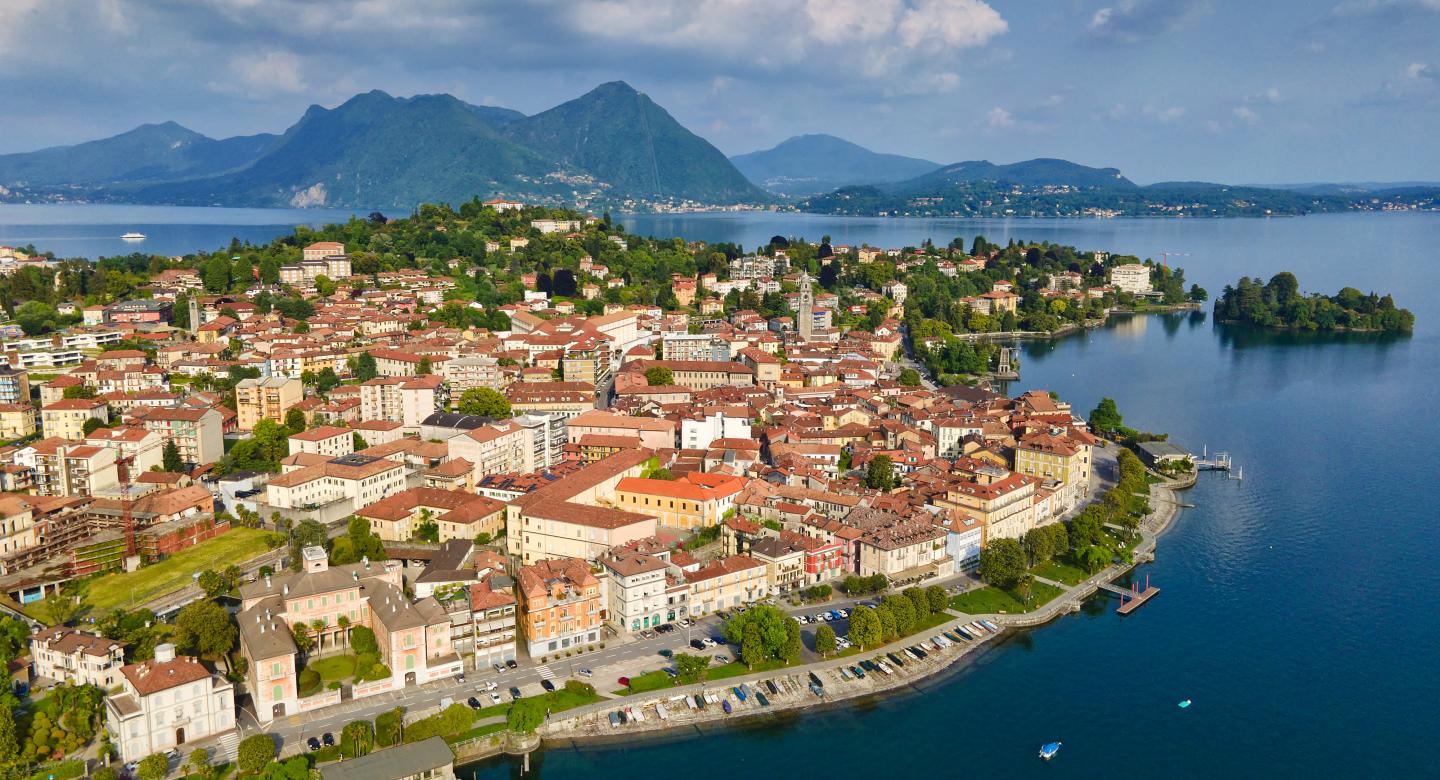
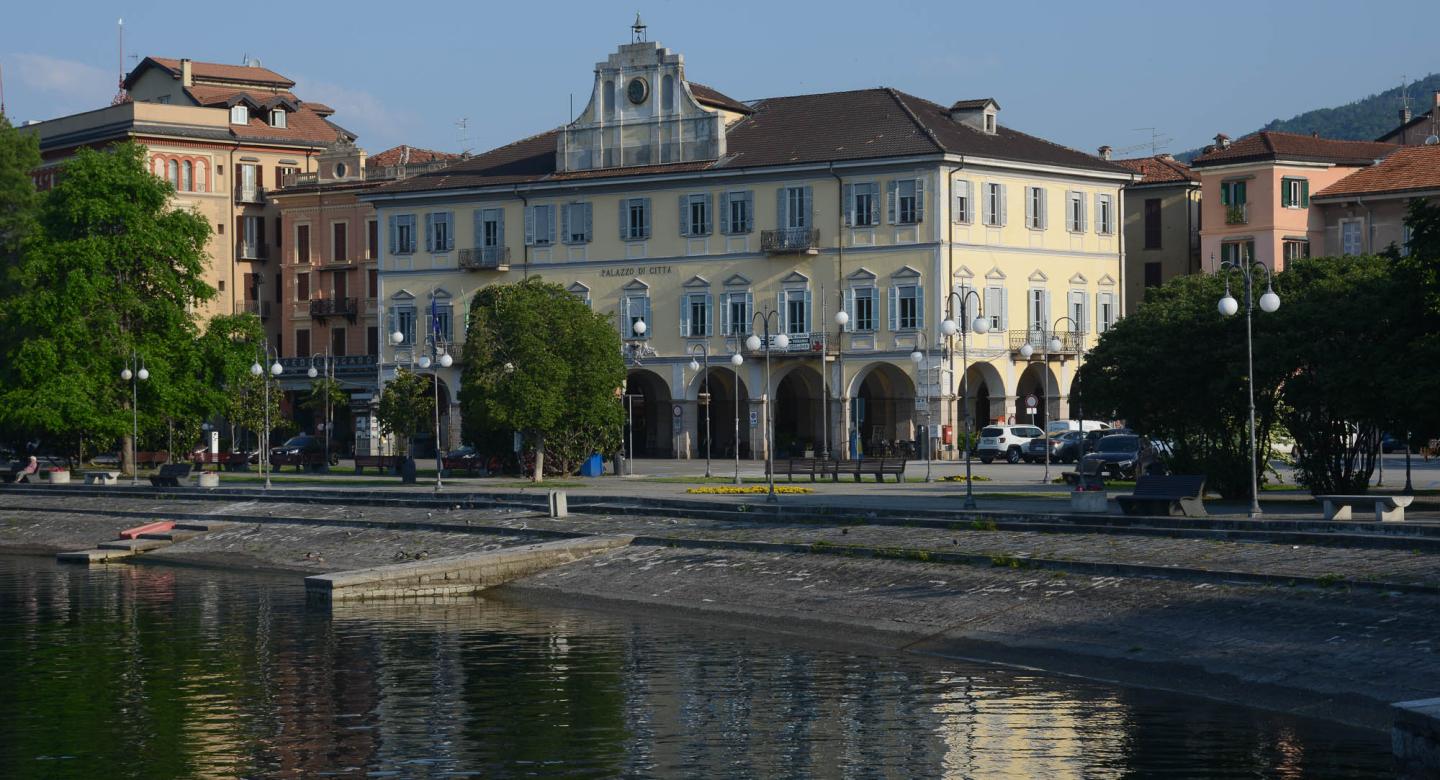
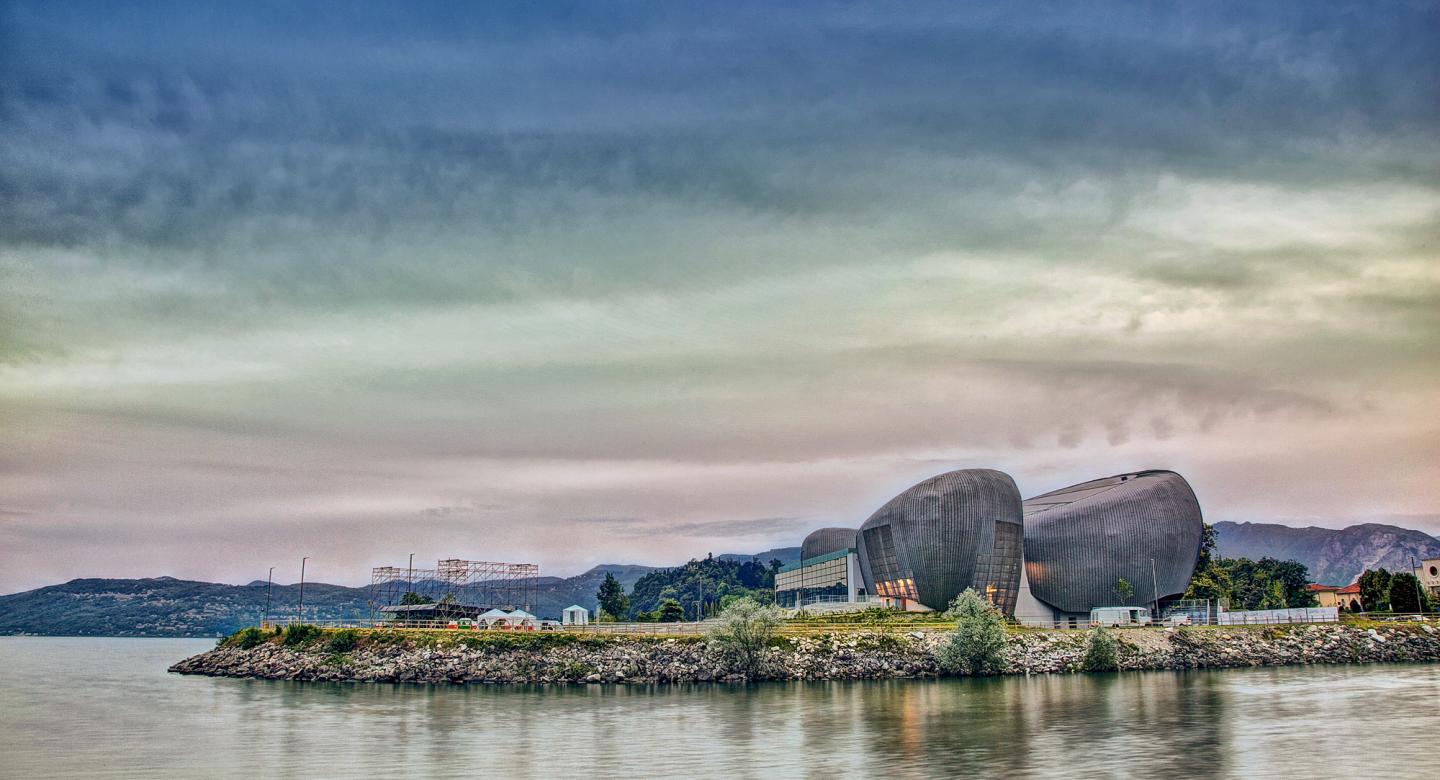
Continuing along the lake, we reach Pallanza, one of Lake Maggiore’s most beautiful and famous tourist resorts. The splendid view of the lake and the Borromean Gulf is striking, and equally enticing is its attractive lakefront lined with historic buildings, churches, monuments and luxuriant gardens.
If you’re seeking the perfect place for scenic selfies, or want to capture the idyllic views, there are several great viewpoints along the way starting from the panoramic terrace at the beginning of Viale Tonolli, and then continuing towards the town centre, up to the shore directly in front of Piazza Garibaldi, next to the Imbarcadero departure point for the boats heading to the islands and towns of the Borromean Gulf.
A short distance from the landing stage stands the 19th-century Palazzo di Città, which has a spacious portico formed by 32 pillars in pink Baveno granite; from here, you can walk up the delightful Ruga - a bustling pedestrian street with characteristic porphyry paving stones - to visit Palazzo Viani-Dugnani, since 1990, seat of the Landscape Museum. It houses the Troubetzkoy Gipsoteca (Plaster cast gallery), the sculpture collection, the Pinacoteca - with works by local artists who have become world famous, such as Daniele Ranzoni, Luigi Litta, Federico Ashton and Mario Tozzi - as well as hosting multiple temporary exhibitions.
Towards the end of the lakefront, a graceful statue catches the eye - the Monument to the Fallen of the First World War by the sculptor Paolo Troubetzkoy. It depicts a mother, holding a child in her arms, in the act of placing a flower and, close by, is the more austere and imposing Cadorna Mausoleum, by Marcello Piacentini, designed as a tomb for the famous General Luigi Cadorna, a native of Pallanza.
Slightly further along the lake is Villa Giulia, a famous 19th-century residence built by Bernardino Branca, pharmacist and inventor of the well-known bitter Fernet Branca. The prestigious building, now in municipal ownership for several years, is a venue for exhibitions and conferences, as well large-scale events promoted by the City of Verbania such as Mostre della Camelia (Invernale e Primaverile) Camellia Horticultural shows (Winter and Spring), the Editoria e Giardini book fair and the LetterAltura, travel and adventure literature festival.
On the occasion of these and other events the Villa is open to the public, while the splendid surrounding park - overlooking the lake in front of the Isolino San Giovanni - is a municipal garden that is always accessible to all.
From here, the scenic cycle/pedestrian path continues, with stunning views of the lake panorama and the historic villas that overlook it, such as:
- Villa Rusconi Clerici, a beautifully preserved late-19th century edifice that is still a private residence. The villa faces the lake with its English garden bordering the waters of the Borromean Gulf, offering a splendid view of the islands. Nowadays, Villa Rusconi-Clerici offers its services and spaces for hosting receptions, weddings, conventions and special events but, at the same time, it still retains the second-floor apartments as the owners' summer residence.
- Grand Hotel Majestic, built in 1870 and currently the only Grand Hotel in the city.
- Villa La Scagliola, cited in late-19th century tourist guides as Villa Hasehburner, owes its English-Gothic countenance to the refurbishments carried out by its first owners. In 1880, the Englishman Charles Hasehburner bought a modest old building, annexed to the glass furnaces, from previous owner Antonio Restellini and turned the site into an elegant and luxuriant home. The name La Scagliola derives from the technique used to cover external walls, with the extensive use of scagliola, small flakes of stone, with which the particularly refined and attractive masonry was made.
Especially fascinating are the basements, where the furnace was originally situated: the vaulted brick ceilings, over six meters high, guarantee good insulation from humidity for the building above, which would otherwise be at risk both from the lake and from the nearby stream that the owners categorically refused to divert, allowing it to pass, in full view, directly beneath the villa.
- Villa l'Eremitaggio: built in 1895 by William B. Kaupe, a wealthy American citizen of German origin, a great traveller and art lover. The entire complex is of particular interest due to its bold eclectic and post-romantic style: here, its creator wanted to express his great love for Italian art, re-proposing features from the past and re-using authentic elements from ancient residences.
The garden, which extends for almost half a kilometre overlooking the lake, is a result of the combination of ancient luxuriant architecture and plants: climbing roses, palm trees, thuja, rhododendrons, azaleas, magnolias, various specimens of camphor, red beeches, conifers, cypresses, oleanders and lemons all intertwine with statues, friezes, stone and wrought-iron parapets.
At the end of the cycle/pedestrian route stands Villa Taranto, a world-renowned botanical garden whose construction was initiated in 1931 by the Scottish captain Neil McEacharn. The park extends over circa 20 hectares and has a unique botanical heritage; the species bloom in different seasons throughout the year creating spectacular floral displays: bulbous plants, azaleas and rhododendrons, water flowers, Dahlia Labyrinth and, to close the season, the autumn foliage.
Nearby is another public park, Villa Maioni, with a flat surface area of circa 30,000 sq mt enhanced with some precious tall tree species. The early 20th century villa is now the seat of the Civic Library named after Pietro Ceretti, the philosopher from nearby Intra.
Various species of camellias, typical flowers of the lake area, are gathered together here in a remarkable collection of specimens from all over the world to be admired by the visitors. The villa and park regularly host exhibitions and cultural events.
At the mouth of the San Bernardino stream stands the contemporary Il Maggiore Multifunctional Event Centre, designed by the Spanish architect Arroyo. This striking building is inspired by the shapes of river stones that have been worn smooth by the waters, a clear reference to the surrounding natural environment.
Inside, the building hosts two theatre halls and a large foyer; a short distance away is a well-equipped beach that is very popular with residents and tourists in the summer season.
All’interno l’edificio ospita due sale teatrali e un ampio foyer; a poca distanza si trova una spiaggia attrezzata frequentatissima d’estate da residenti e turisti.
Intra
![Intra Paolo_Minioni_Fotografo_Verbania_Copyright_2022-Verbania_Intra[1]](/sites/default/files/styles/gallery_blocchi_redazionali/public/field_blocco_redazionale/gallery/180/paragrafi/31948/Paolo_Minioni_Fotografo_Verbania_Copyright_2022-Verbania_Intra%5B1%5D.jpg?itok=xtnrUfT8)
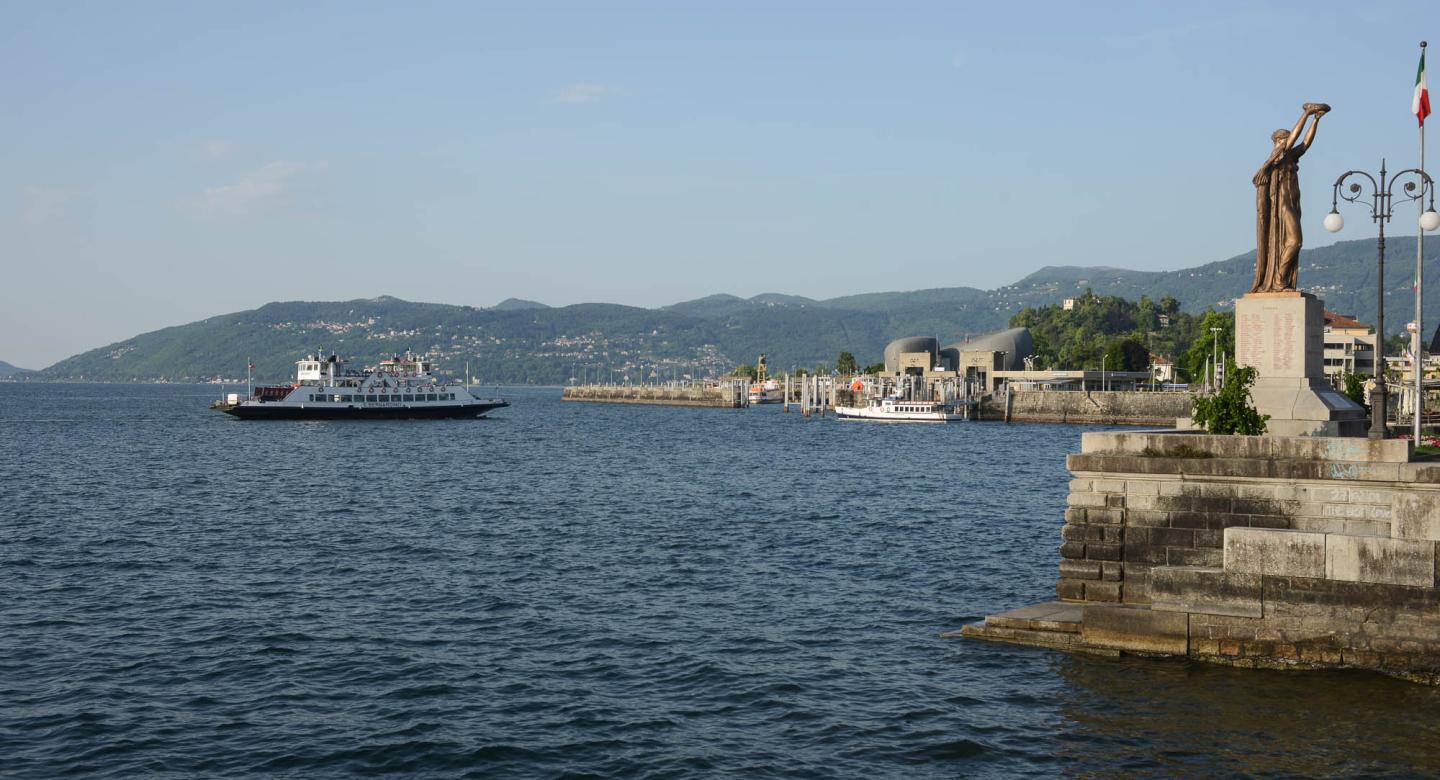
The ancient municipality of Intra derives its name from its unique position, ‘between 2 rivers’: the San Bernardino and the San Giovanni. Thanks to the newly completed lakefront it is now possible to enjoy a walk along the coast road, directly between the two rivers. The project was designed by architect Giovanni Tortelli di Montichiari, winner of the urban creative contest organised by the civic administration in 1987.
The construction began in 1995 and created a new layout for the spaces along the entire lakeside promenade with the inclusion of a green area that separates it from the road, a new public illumination system, large semi-circular benches and other urban furniture.
The project also comprised the restoration of the canopy of the former Imbarcadero landing stage.
Since the end of the 18th century, Intra had been the site of ancient reseghe sawmills, of sbianche, enormous tanks used to bleach fabrics, and of wheat grinding mills using water power. These have now all completely disappeared, together with the rogge - the artificial canals that crossed the entire historic centre. Very little remains today of Intra’s ancient industrial vocation - once known as ‘the little Manchester of Lake Maggiore’ as testimony to the important role it played in the textile industry.
However, vestiges of that ancient era are still present. A significant example is the historic floral Art Nouveau landing stage, constructed in 1859 to enable pleasure steamers to reach the mainland. Already in 1826, the first steamer had arrived close to Intra but it had to anchor offshore for the travellers to be transported to the banks in small rowing boats. The covered pier also served as a venue for the local market, thus also fulfilling a commercial purpose.
Also noteworthy is Piazza Ranzoni with its famous Palazzo del Comune, the ancient home of the Podestà (Magistrates Court), Palazzo Pretorio, and the impressive Palazzo delle ‘Beccherie’, an ancient slaughterhouse that now comprises elegant private residences with luxury shops at ground level.
Another prominent feature in the area is undoubtedly the Colonna del Porto, nicknamed la culòna (big column) by the residents, and considered the symbol of Intra. Dating back to 1834, it is made of Montorfano granite and was originally intended for the colonnade of the church of San Paolo outside the walls in Rome; however, given that it did not meet the specific requirements, it was positioned at the port.
In the disastrous flood of 1872, when the S. Bernardino broke its banks and engulfed Piazza Teatro through the Fiumetta riverbed, the port was unable to withstand the flood, with the exception of the aforementioned column that remained steadfastly in place and became, from that moment onwards, the symbol of the city.
Leaving the lakefront behind you, and entering the labyrinth of narrow streets of the historic centre, you will still be able to admire ancient palazzi alongside the modern and elegant shops, bars, bistros and typical restaurants offering a variety of delicious lake specialties. Age-old taverns and typical trattorias still evoke the atmosphere of the past, excellent locations for a delicious light lunch, a snack or an after-dinner drink immersed in another era.
Gallery
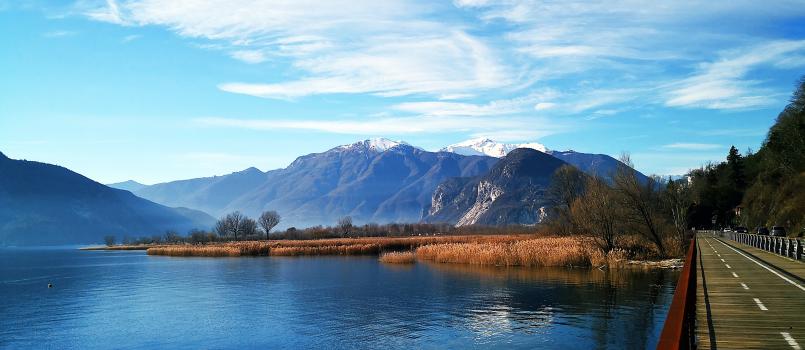
![Paolo_Minioni_Fotografo_Verbania_Copyright_2022-Monumento_Suna_progetto_M.Tozzi[1]](/sites/default/files/styles/gallery_caption/public/articolo/images/18770/31957/Paolo_Minioni_Fotografo_Verbania_Copyright_2022-Monumento_Suna_progetto_M.Tozzi%5B1%5D.jpg?itok=-k5sszCM)
![Intra Paolo_Minioni_Fotografo_Verbania_Copyright_2022-Verbania_Intra[1]](/sites/default/files/styles/gallery_caption/public/articolo/images/18770/31958/Paolo_Minioni_Fotografo_Verbania_Copyright_2022-Verbania_Intra%5B1%5D.jpg?itok=MagkkmFt)
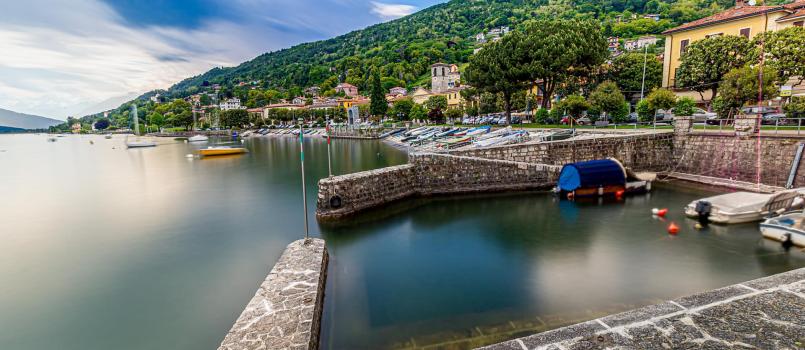
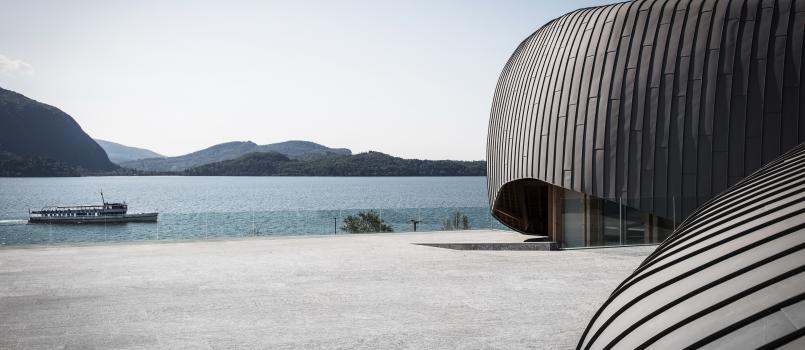

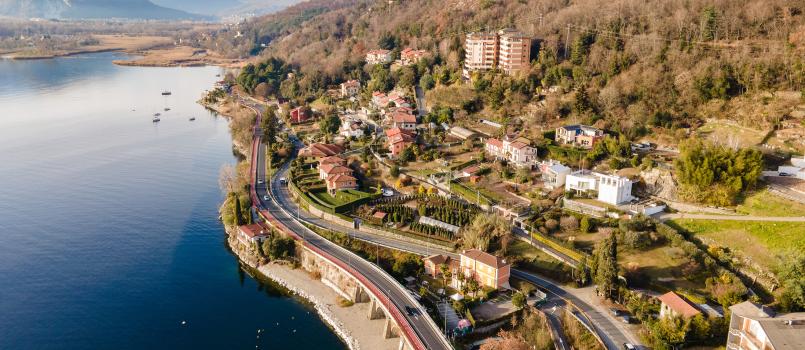
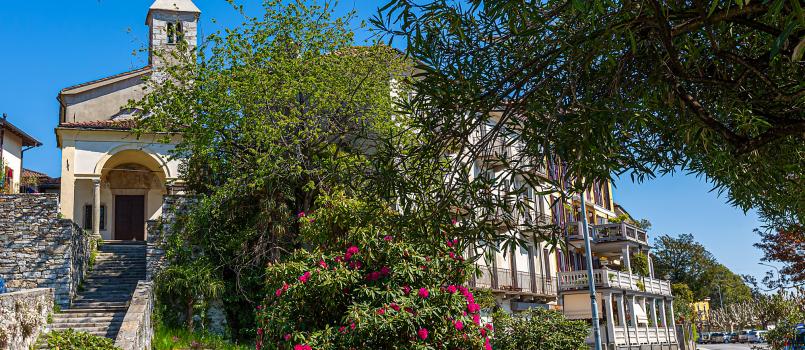
Contacts
Email: turismo@comune.verbania.it
Tel: +39 0323 503249/542250 (Comune di Verbania - Assessorato al Turismo - Department of Tourism)

